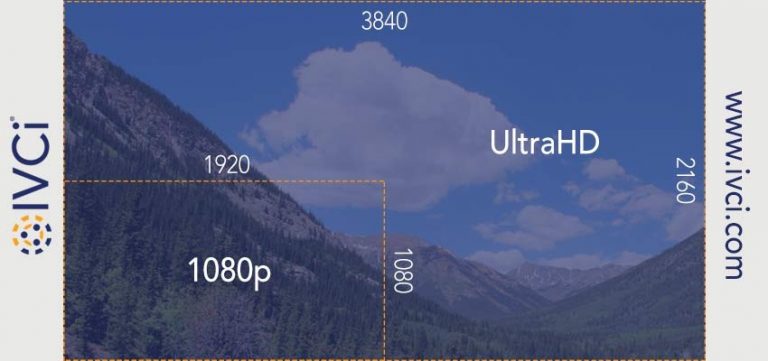4K Video – Hype or the Real Deal?
Every few years it seems a new technology comes along that claims it will revolutionize audio visual technology. The most recent on the video side is the proliferation of 4K video. But is this new technology simply a fad or something that has the potential to make a real impact?
What is 4K?
4K is the next step in video resolution and represents four times the amount of pixels currently offered in 1080p displays. 1080p technology is widely used in both consumer and professional markets. In fact, one can walk into a store and for a few hundred dollars purchase a quality display and Blu-Ray player capable of displaying beautifully rich HD images. 1080p offers a resolution of 1920×1080 (2,073,600 pixels). Ultra High Definition offers a resolution of 3840×2160 (8,294,400).
It is important to note that there are a few different flavors of 4k. “True” 4k is actually 4096×2160 pixels and is something you would see in a movie theatre. The difference lies in the variations between the aspect ratio (height to width ratio) of a movie screen vs. a TV). In many cases television manufacturers will use the term Ultra HD instead of 4k. With all of these extra pixels, picture clarity is substantially increased and the nuances and detail of images are exponentially improved.
All of those extra pixels sound great, but why should I care?
If you are a photographer, images will truly pop off the screen. In most cases, digital photos are massive pixel wise (a 20mp camera creates an image that is 5472×3648 pixels!), and with an Ultra HD display more of those pixels can be seen on screen, creating an incredibly life like presentation of the photo.
For video content, Ultra HD is still in its infancy. There are currently no television channels that broadcast in Ultra HD. However, Netflix has begun to offer its original series, House of Cards, in full Ultra HD. Additionally they have announced that Orange is the New Black will be available in 4k shortly.
How about Video Conferencing and Collaboration?
Ultra HD is opening up some exciting new doors for video conferencing and collaboration technologies as a whole. First, with Ultra HD displays viewers can now view more participants on screen in even higher resolution. Since Ultra HD is basically 4x the resolution of 1080p, it is possible to view 4 different video conferencing participants in their full 1080p resolution at once. Second, and perhaps most important, sharing content in a video session with Ultra HD is potentially game changing. When viewing high resolution CAD drawings or medical images, more of the image data can be displayed, as opposed to scaling down to fit a 1080p setup. The result is a much more detailed image that can be conveyed to remote participants. For medical applications, an MRI, for example, could be shared and nearly all of the detail presented.
Ok, I’m intrigued now, but how much is this all going to cost?
UltraHD and 4k are relatively new technologies but the cost of displays and distribution products have dropped since their initial release. Consumer 4k TVs continue to decrease and can be had for just a few thousand dollars. As adoption continues the cost of entry will continue to drop.
4k is here and the technology is continuing to evolve. Unlike fads like 3D TV, 4k has some real-world applications that are helping the technology to be adopted. As more content is created and manufacturers embrace 4k cameras and other peripherals, 4k has the potential to truly represent the future of the visual image.



